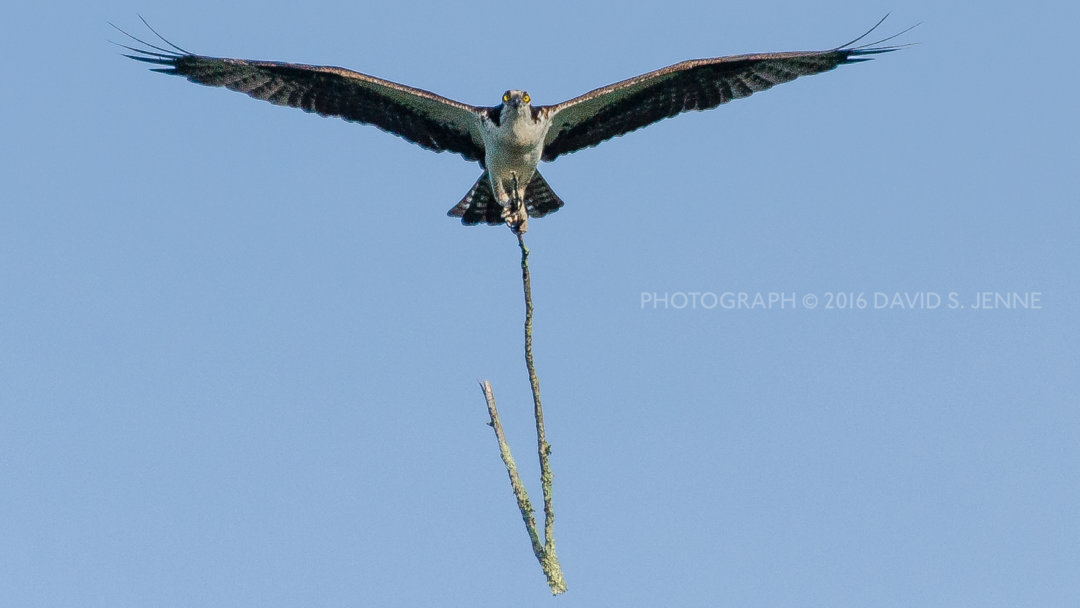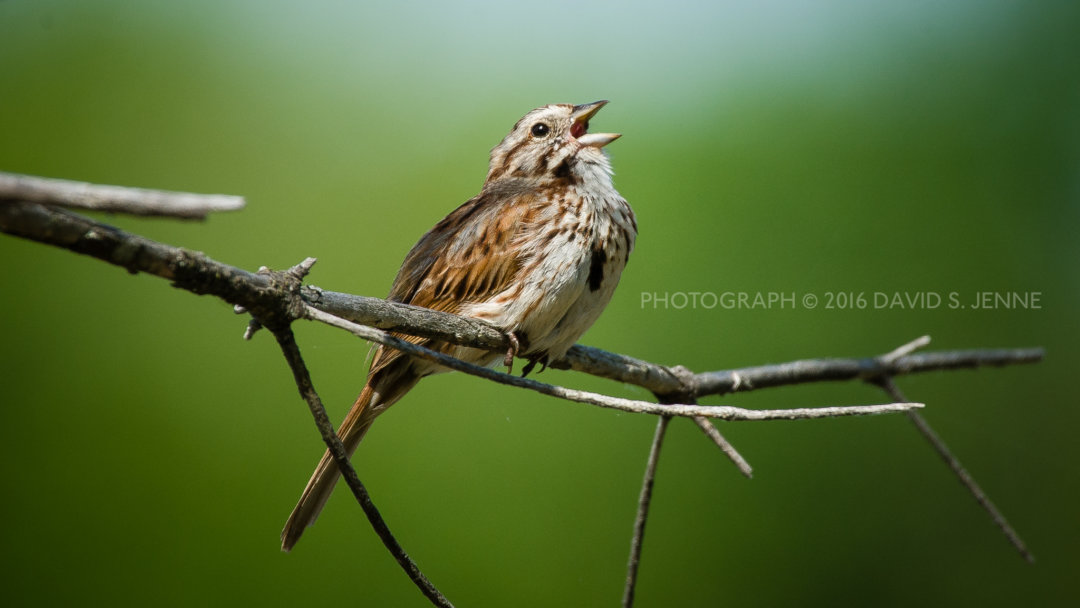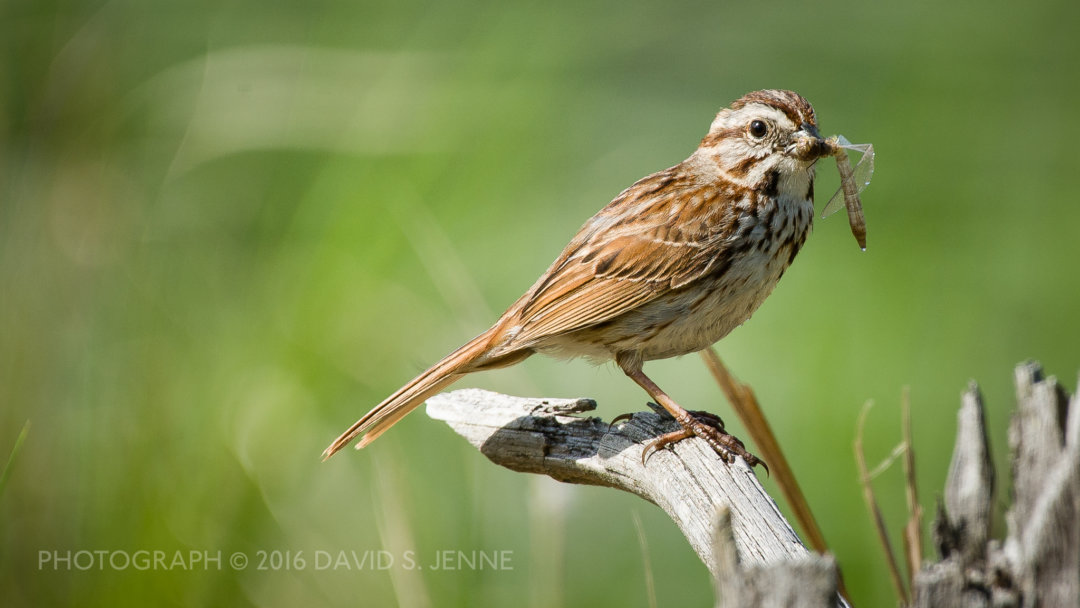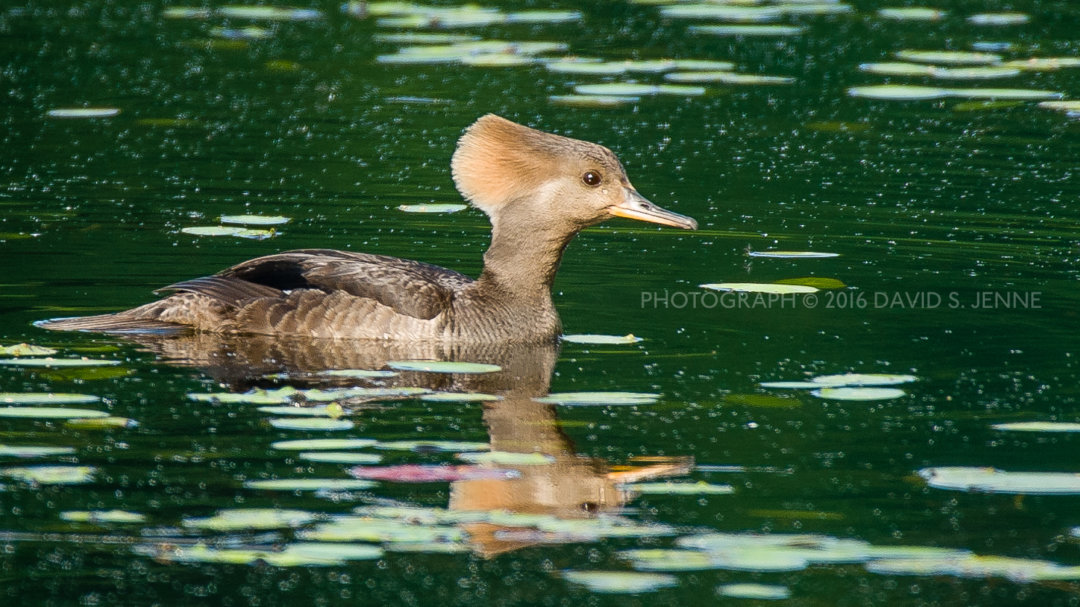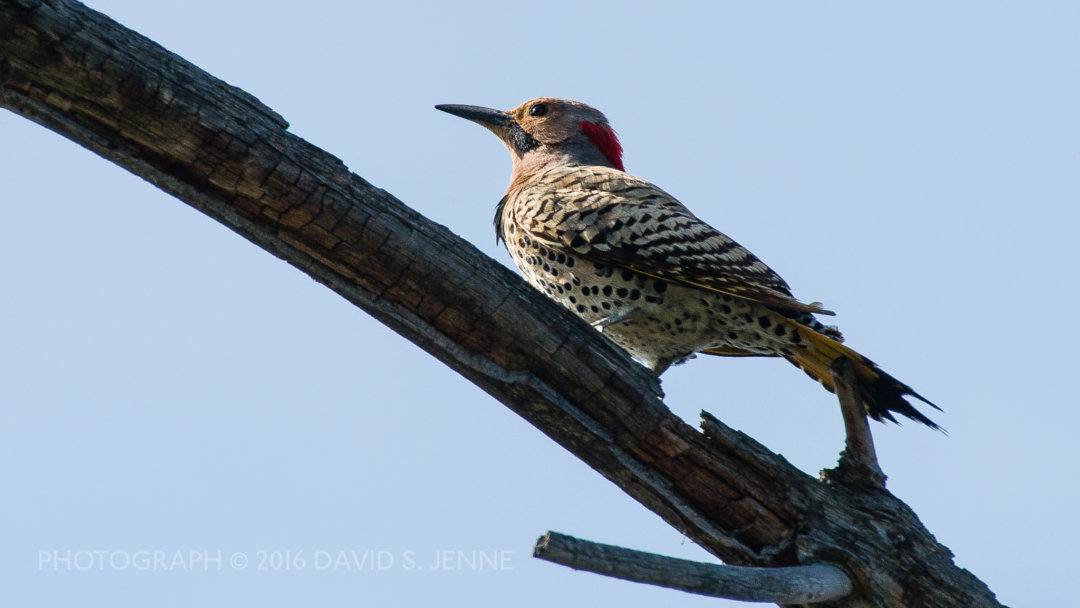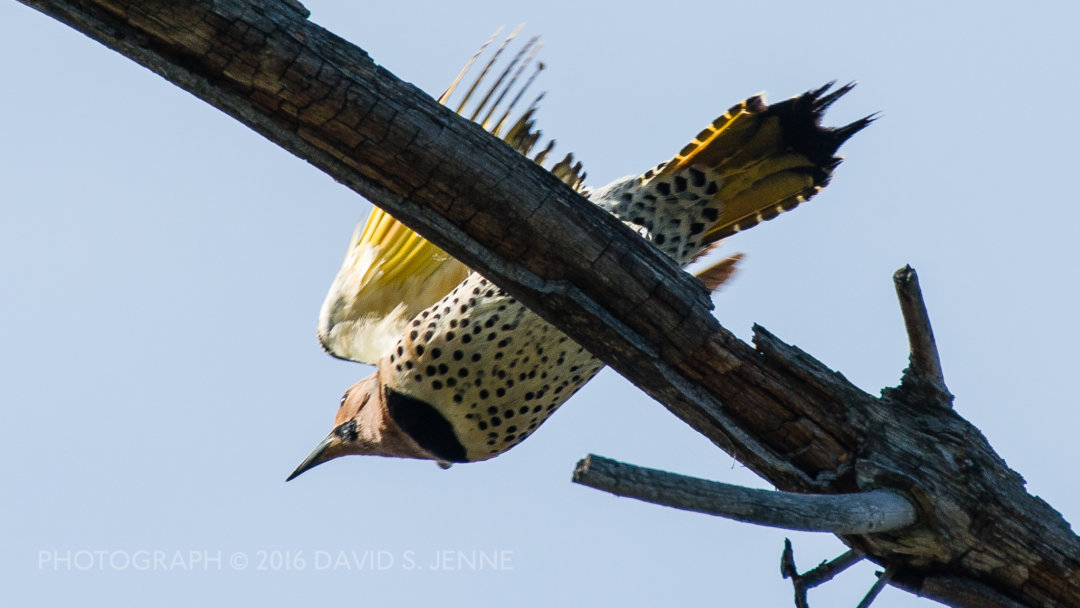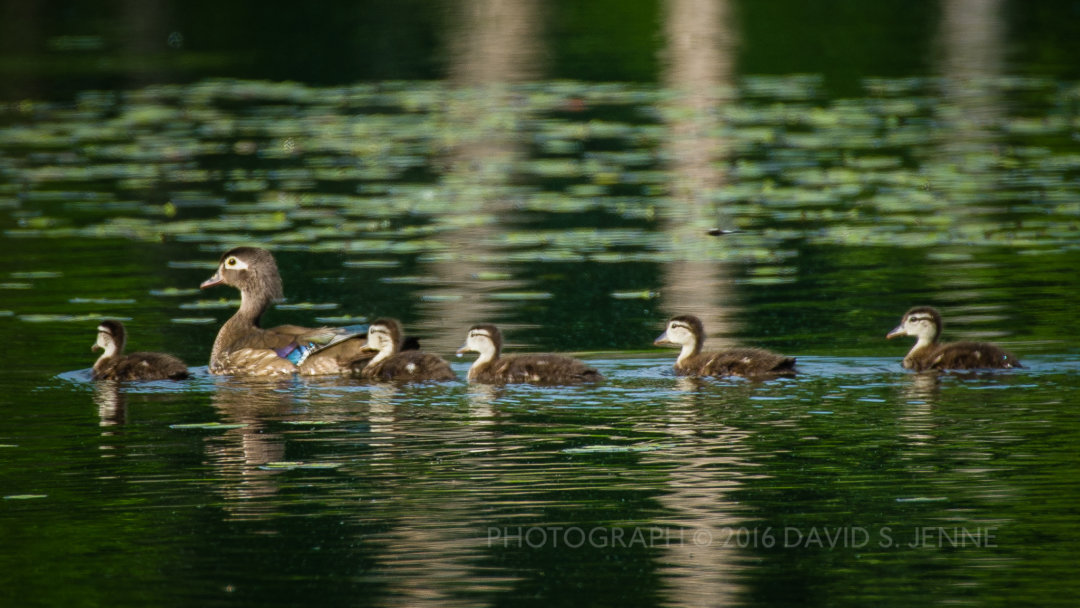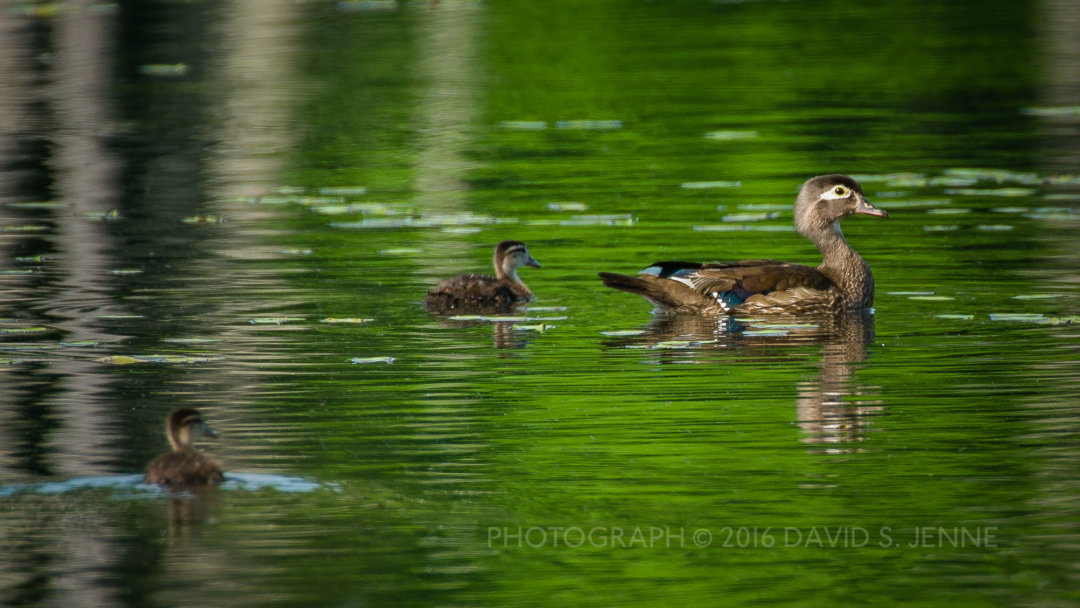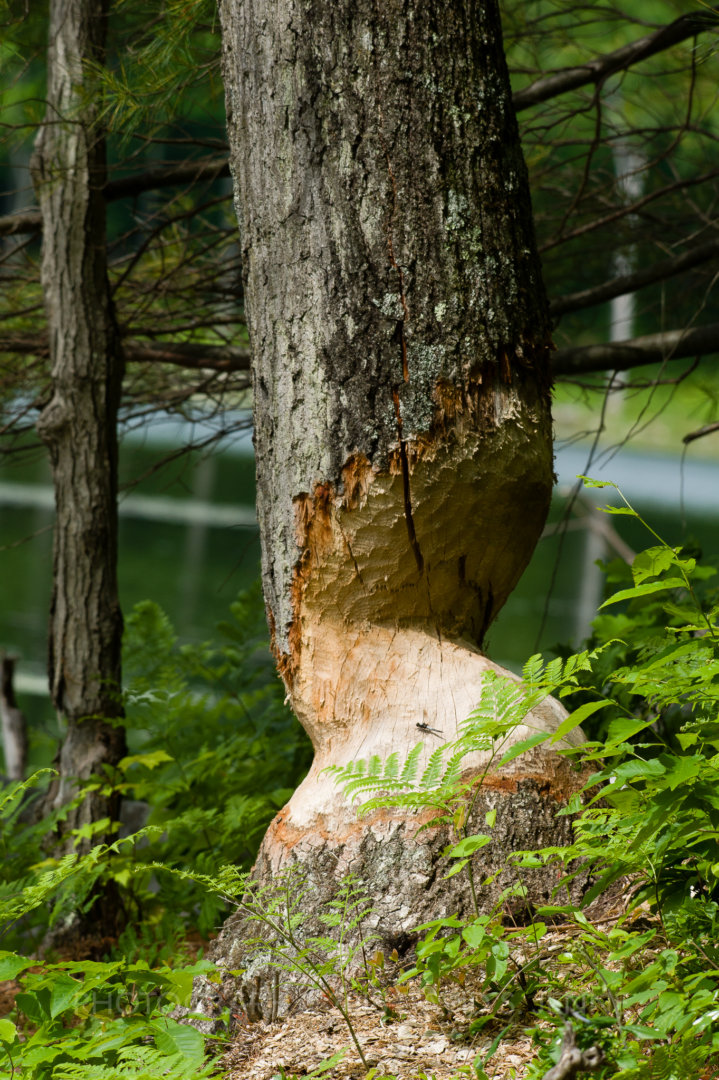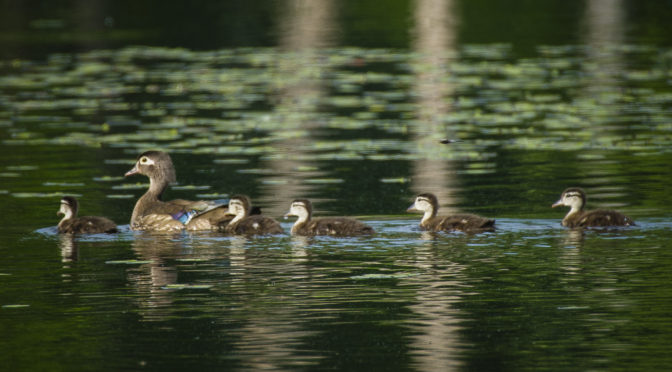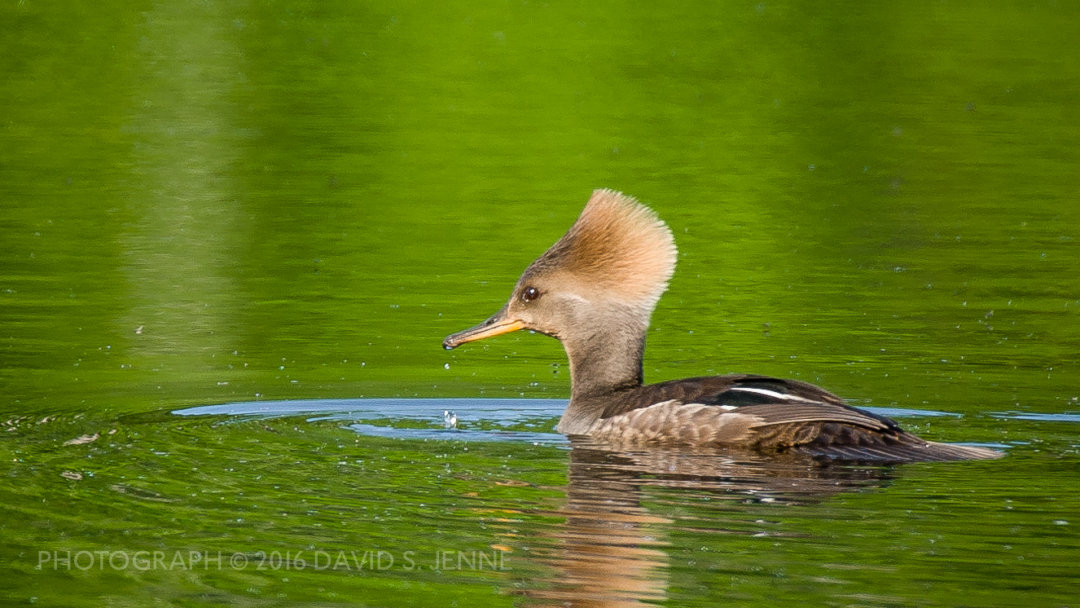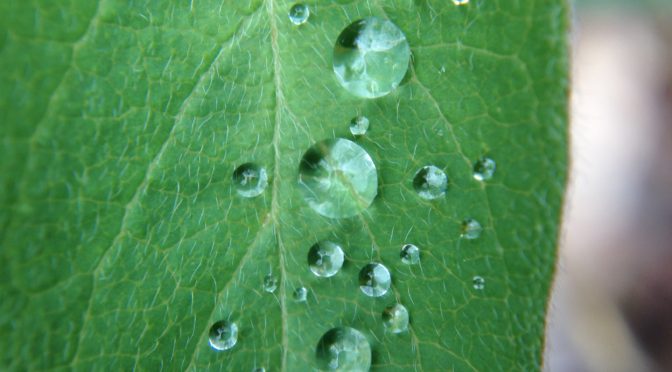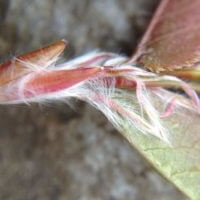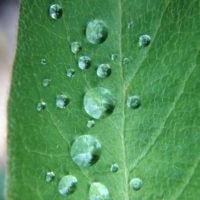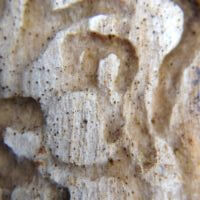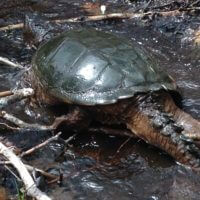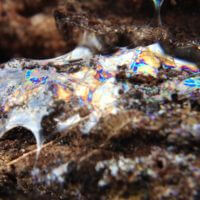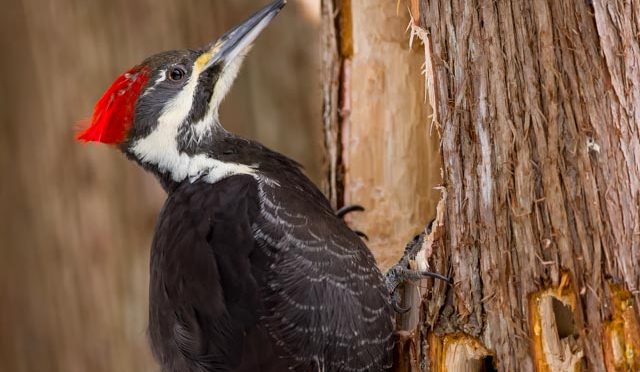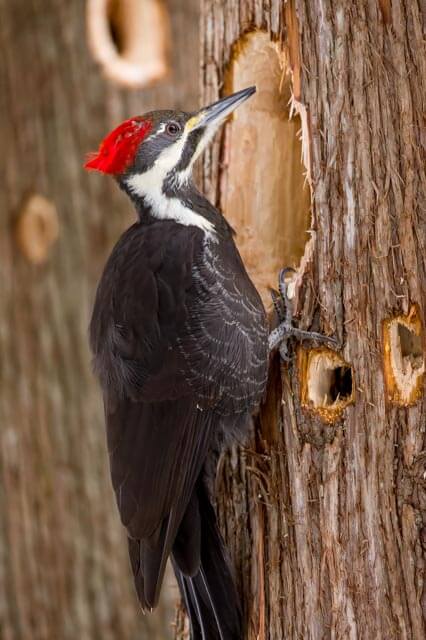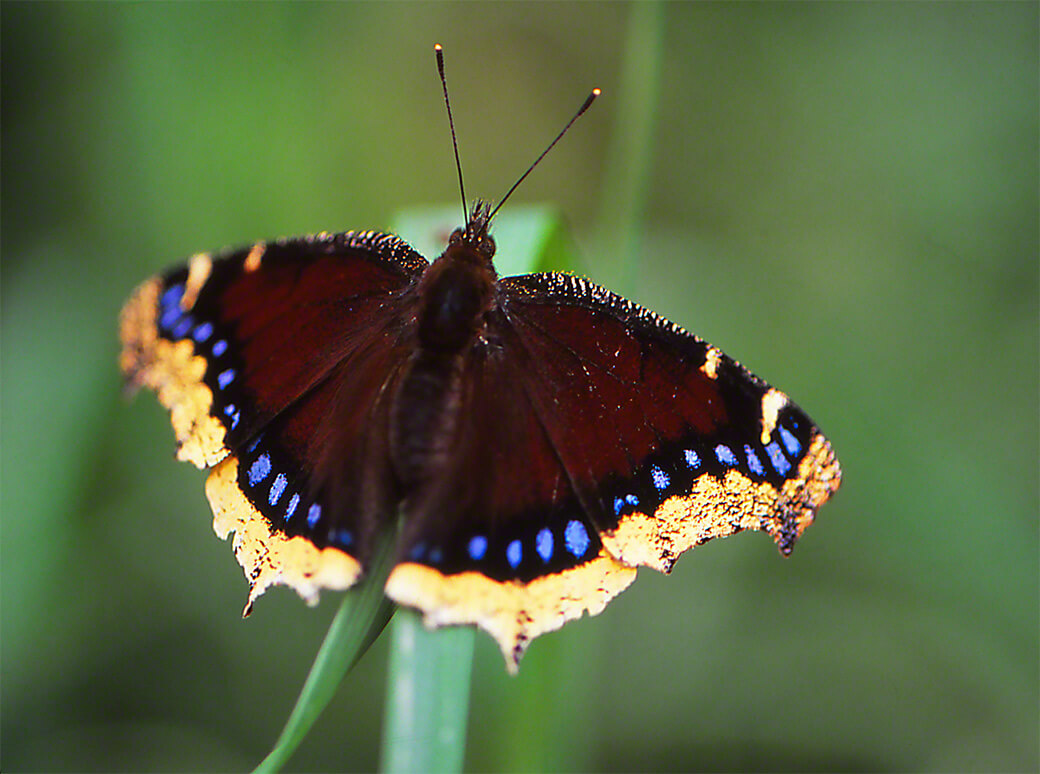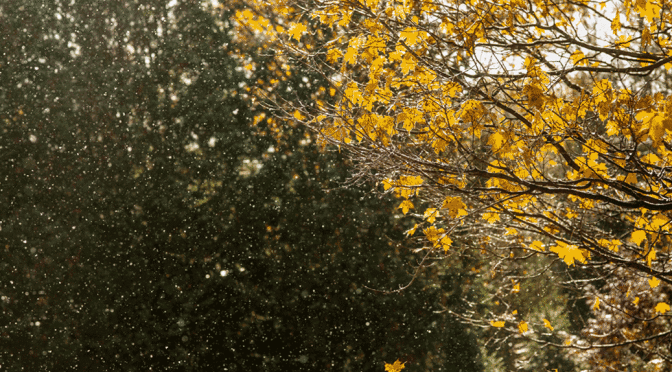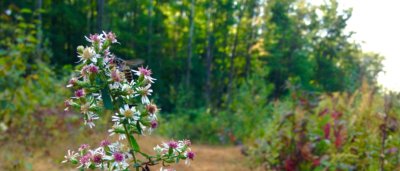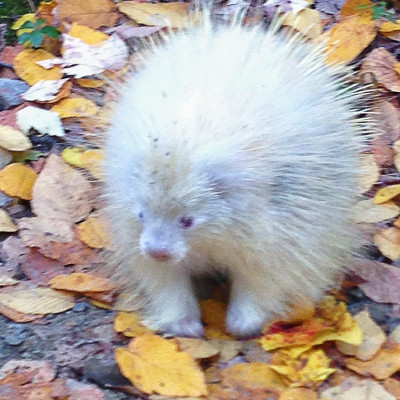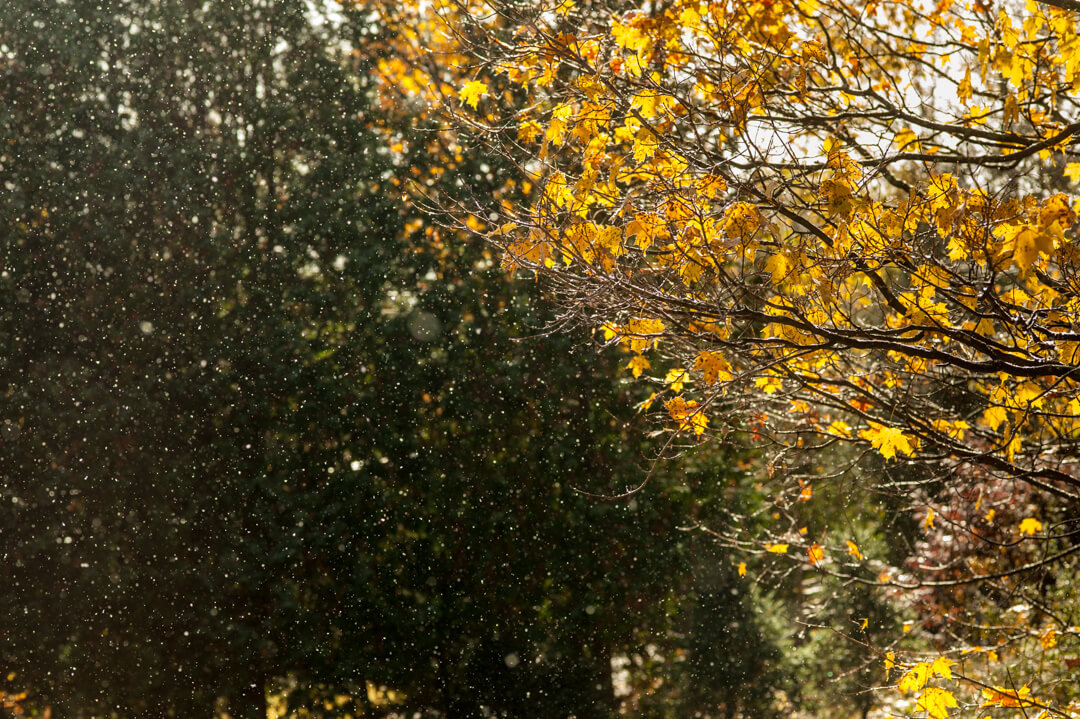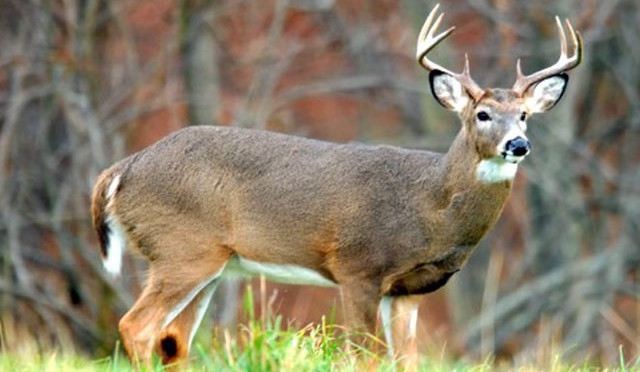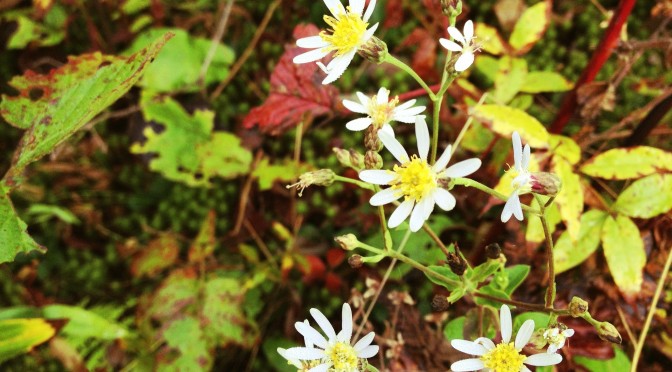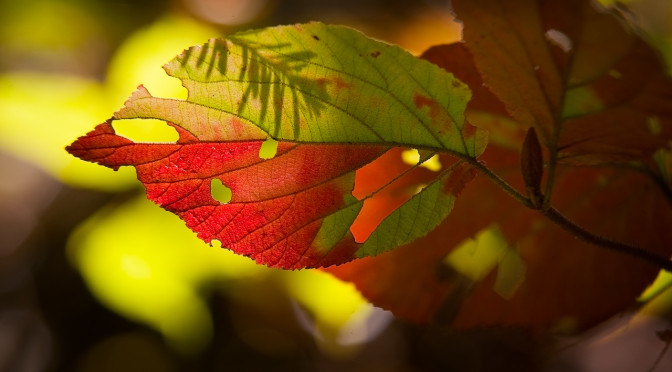Pine Hill Park Summer, 2015 • Natural History Summary
By Tom Estill
The first day of summer, 2015 saw the park filled with the sounds of birds establishing and maintaining their territories, mating calls, and baby chicks chirping for food. Birds COMMONLY seen or heard in the park this time of year included: veery, American redstart, hermit thrush, ovenbird, Eastern wood peewee, great crested flycatcher, catbird, song sparrow, yellow-bellied sapsucker, black-capped chickadee, white-breasted nuthatch, hairy woodpecker, pileated woodpecker, wood thrush, rufous-sided towhee, downy woodpecker, northern flicker, red-eyed vireo, robin, myrtle warbler, and mourning doves. Near Rocky and Muddy Ponds you’ll typically find red-winged blackbirds and great blue herons, and hear the croaking of the American Bullfrog and Greenfrog. On June 25th, I was delighted to hear and see the Scarlet Tanager near Trail Marker 24, the same place I have heard and seen them for the last three years. This year, I also saw them near Rocky Pond and the first Giorgetti Trail. So glad to see their population at the park doing well.
By this time of the year, all the 27 American chestnut trees planted at the beginning of June had leaves, except one. They’ve done very well this summer. During the “dry/hot spell” of late July and August, I actually carried water up to the plants and gave them extra waterings. At this point, I’m hoping that at least 26 of them will make it through the winter. I’ll continue to keep an eye on them throughout the year.
Chipmunks seemed to be in high numbers this summer, certainly more than last summer, while the population of grey squirrels appears to be steady.
Baby painted turtles were seen at Rocky Pond, along with huge numbers of young bullhead catfish and Eastern Newts. Also during this time of year, red efts are a common site along the trails, especially after a rainy day.
Butterflies are also a common sight in June, including mourning cloaks, white tails, 12-spotted skimmers, cabbage whites, and sulfurs.
The end of June saw more and more wildflowers making their appearance including: hop clover, partridge berry, Canada lily, laurel, and Devil’s Paintbrush. Fern spores were maturing, and wild strawberries were ripe for picking along with red raspberries.
Green frog tadpoles born in the spring were seen with developing hind legs at Rocky Pond.
The first week of July saw new wildflowers appearing, including: shinleaf pyrola, sheep laurel, pale corydalis, black-eyed Susan, evening primrose, St. Johnswort, purple flowering raspberries, and white sweet clover. A northern water snake was seen in Rocky Pond, and garter snakes were a common sight all throughout the park, especially near the ponds. Small American toads and Cedar Waxwings were seen the first time near Rocky Pond. The baby yellow-bellied sapsuckers fledged at this time, also.
Mid-July found a Yellowthroat under the powerlines on Crusher Road, the same place I’ve seen Yellowthroats there in the last 3 years. More species of butterflies are appearing, including the great sprangled fritillary, silver-spotted skipper, Tiger Swallowtail, clouded sulfur and northern pearly-eye. And, of course, new wildflowers included: pointed-leaved tick-trefoil, Queen Ann’s Lace, Golden Alexander, purple loosestrife, and goldenrod. Woodchuck seen feeding on clover, and, upon seeing me, ran into its hillside den on Crusher Road.
Followed up on a report of a Great Blue Heron nesting at Muddy Pond. Found the nest, and an adult heron standing on the nest, but no young. I kept a close eye on the nest all summer, but saw no sign of a successful nesting. And I never saw more than one heron at a time at the nest, or in the pond.
Saw a male and female indigo bunting under the powerlines on Carriage Trail, the same place I saw them last year. Hopefully, they’ll return next spring. They’re a beautiful bird. I played a tape of the bird’s call over my phone, and the male bunting alighted on a branch a few feet from me. A truly magical moment.
Forest beginning to noticeably quiet down in the afternoon this time of year. Most birds are finished raising their young, and the birds are no longer establishing territories.
Towards the end of July, I had a broad-winged hawk follow me along the Carriage Trail from Trail Marker 24 to the powerlines. It would do that for about a month. I can only guess that my walking was frightening birds and small mammals in front of me, and making them more easily visible to the hawk.
Sow and her cub seen eating berries under the powerlines on Crusher Road. I was hidden by a small hill, and could see the sow, but was not aware of the cub nearby until it started making some noises, at which point I started back tracking as fast as I could.
The last day of July, I entered a very, very, quiet forest. Lots of robins gathering in loose associations, in preparation for their upcoming southern migration. Numerous immature wood frogs found throughout the park. The common wood nymph butterfly is now a common sight.
The first week of August I saw my first maple starting to change colors. Noticeably cooler, especially in the evening. Lots of butterflies with the emergence of the fall asters. Some flowers still appearing, including: agrimony, common nightshade, eastern-tailed blue, asters, jewelweed, lobelia, hawkweed, willow-herb, blue vervain and butter-and-eggs. The forest is now so quiet compared to a month ago.
Mid-August saw the first migrating waterfowl at Muddy Pond, mostly mallards. Thistle, whorled wood aster, Joe-pye-weed, and rattlesnake root. starting to flower. Having a “hot spell”. Hot and humid days. But, cardinals are still singing near the trailhead. And a grey treefrog was heard calling. Migrating warblers are becoming a more and more common sight, including pine warblers and black-throated blue warblers.
Towards the end of August, a barred owl was heard “hooting” at rocky pond, and American goldfinch were becoming more and more a common sight. New flowers include: white vervain, wood betony, hog-peanut, bottle gentian, turtlehead, and northern bugleweed. Black chokeberry and winterberries are now ripe, and can be found on the shores of Rocky Pond.
At the end of August, my walks were very quiet, with only a few birds seen or heard, including the pileated woodpecker, black-capped chickadee, white-breasted nuthatch, cardinal, wood thrush, and a few robins. A New England cottontail was seen feeding under the powerlines on Crusher Road. For the first time this season, bald-faced hornets seen in large numbers flying close to the ground in search of prey. I try to keep my distance from them.
The beginning of Sept. found a very quiet forest. On one walk up to Rocky Pond on Sept.1st, all I saw or heard were a cardinal, Eastern wood peewee, a couple blue jays, and a ruffed grouse which explosively flew off right in front of me, giving me quite the “start”. Forest is very dry some a long dry spell. Had to give the chestnut trees extra water. I was actually worried about the fire danger. Luckily, no fires were started at this time.
The middle of the month saw a cold front move through bringing rain and dropping temperatures. What a relief for everyone. Hawks migrating through the area. Got a nice view of a red-tailed hawk. More and more waterfowl seen at Muddy Pond, especially Canada geese and mallards. Leaves are changing color. Migrating yellowthroat seen and many crickets heard all throughout the park. You can sense a change in the forest, as the plants and animals prepare for the long, cold winter ahead.
On Sept. 20th, I took my last walk of the season. Many crickets could be heard throughout the forest, my hands were actually cold from recent cold fronts moving into the area, robins, along with various warblers, were migrating, the ponds were showing increasing numbers of waterfowl, and the birds of the forest were becoming more and more those species typical or fall and winter, such as the black-capped chickadee, hairy wooodpecker, pileated woodpecker, white-breasted nuthatch, blue jays, and crows.
